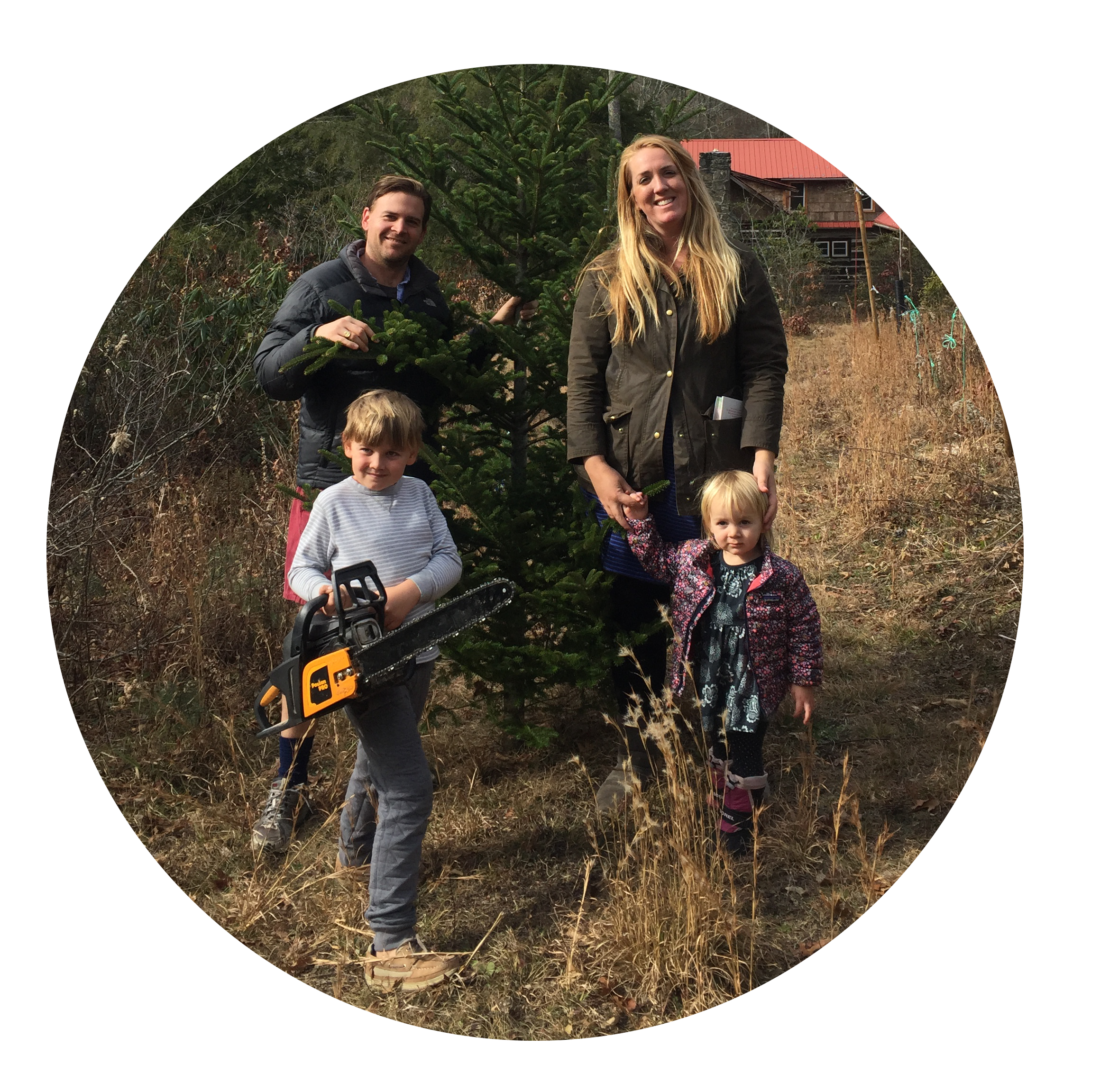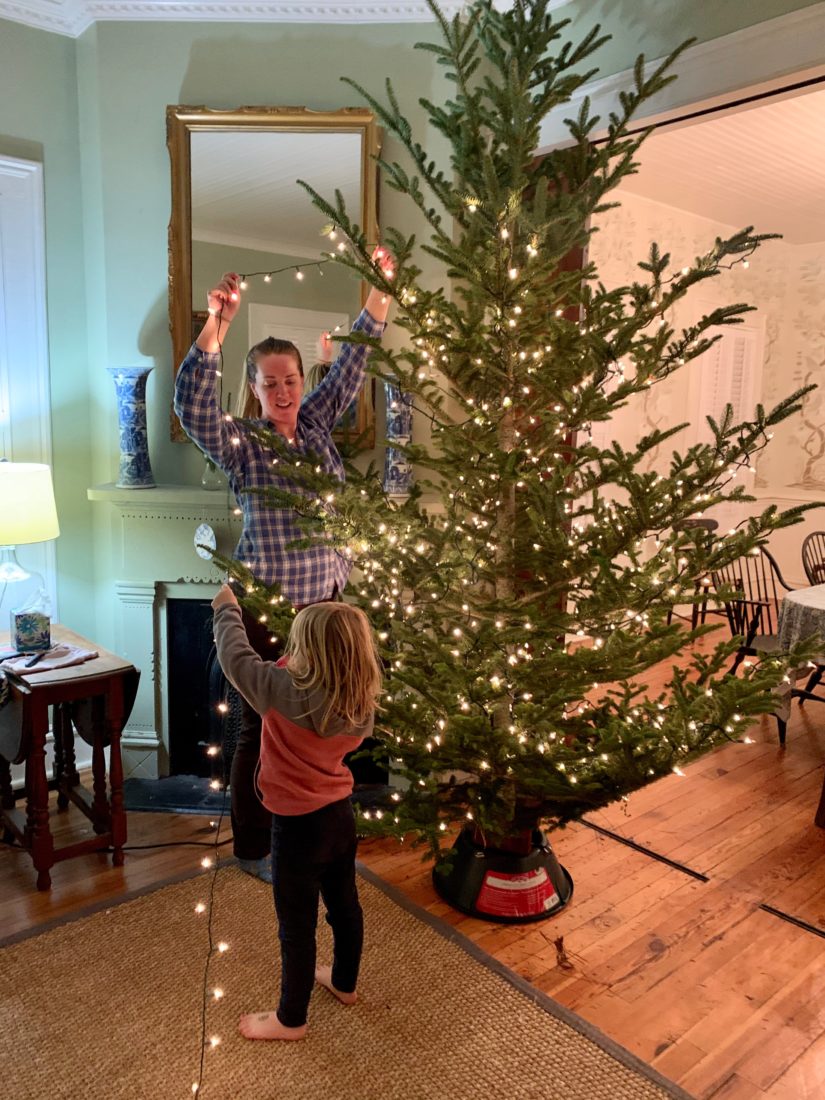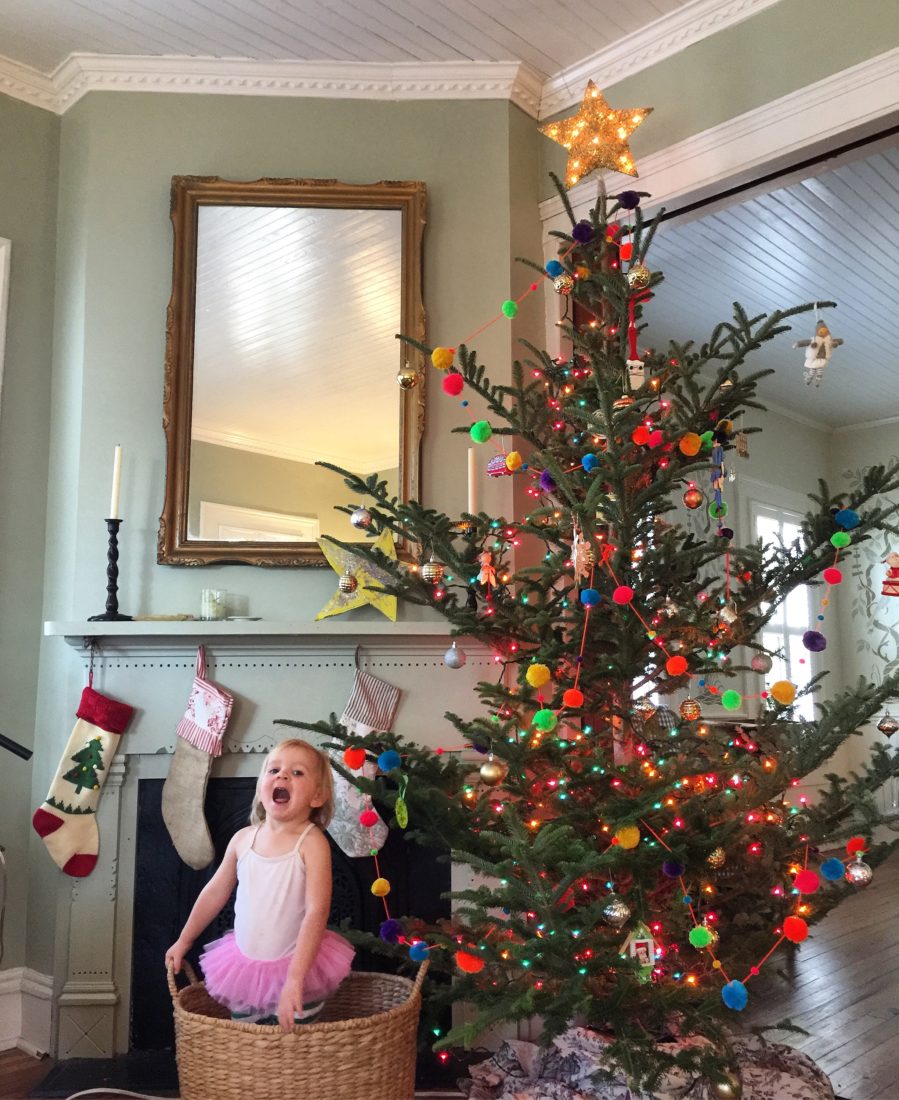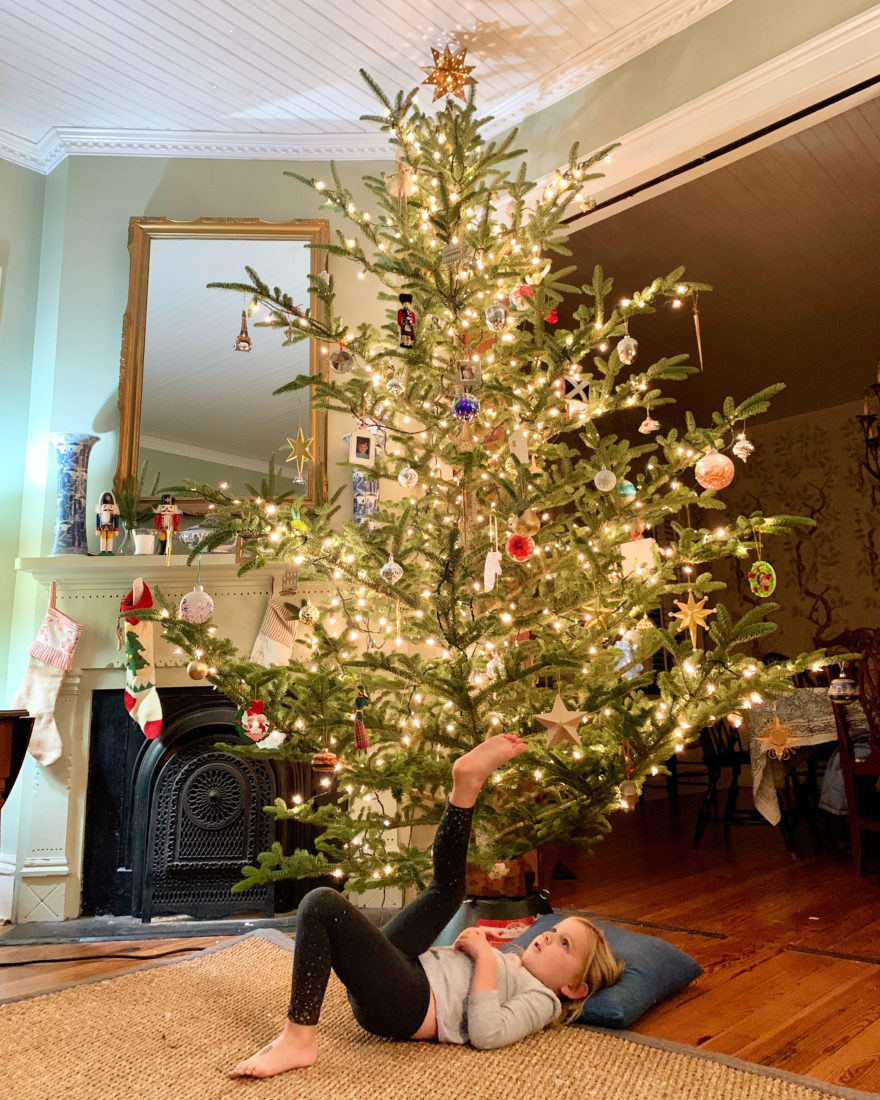If you, like me, were lucky enough to grow up in the wilds of Western North Carolina, then you already know that Christmas tree selection is a serious undertaking. For the uninitiated, understand that a handshake from our favorite tree farmer was the linchpin on which the holiday season turned—never mind that he only had three fingers.
The selection process began the morning after Thanksgiving when we bundled into the old Jeep and made our way up the mountain. The farmers lived deep in a holler near Panthertown Valley, every last usable inch of their land planted with Christmas trees in every imaginable shape and size. Sounds died deep in the rows of trees, and the ground was soft with decaying needles. My shouts were muffled and I was often lost. The wind was always impossibly sharp up on the mountain and wisps of clouds scudded through the alleys of Fraser firs. To an eight-year-old, it felt like retrieving a tree from the top of the world.
The trees we hauled off that mountain were always gnarled, misshapen things. They were eaten up with lichen, thinned out in the middle, and usually had one side that needed turning toward the wall. The farm certainly grew the lush, perfectly conical trees populating Christmas movies, but for reasons lost on my childish mind my family was fully committed to trees untouched by the modern conveniences of fertilizer, irrigation, or pruning. We called them simply, “scraggle trees.”

I come from a long line of Christmas tree apologists. My grandfather, an impoverished minister, insisted on purchasing a tree on Christmas Eve, preferably once the sun had set, when all that remained on the lot were stray branches and one or two desiccated carcasses. He would then haggle with the tree-seller until the poor man let him drag it off for free. Few needles remained once it was erected in the parlor, but no matter—it was converted to kindling the very next day.
Once an object of scorn and derision, I’ve noticed in the past few years that people are starting to appreciate the scraggle tree (even the Rockefeller Christmas tree appears to be balding this year.) “How did you get that tree?” friends ask me. “Did you thin the branches?” Perhaps, at last, our collective unconscious is weary of the perfect cone and is instead hungering for the chaos of nature. The sublime snarl of a scraggle tree can only be achieved with years of neglect. It takes a little bit of planning and then absolutely none at all. The scraggle tree is a collective sigh for the over-planned and overstimulated during the busiest time of the year.

My children, forced to embrace the scraggle tree as their birthright, despair over the spindly branches come decorating time at our home in Summerville, South Carolina. The anemic branches bend listlessly to the floor, ornaments shattering on the ground. We have exactly one nice glass ornament that I wire to the trunk. “This tree is historic,” I find myself saying every year. As a professional historian (I’m the director of engagement at the Classical American Homes Preservation Trust), I cannot help myself. “This is how Christmas trees looked in the Victorian period, when our house was built. Queen Victoria had a tree like this in England!” My children have no idea what I’m talking about, but I say it anyways, every year. It’s an affectation of mine to choose things for our house that reflect the period in which it was built. Extending this concept to our Christmas décor feels obvious to me but is likely the sort of thing my children will use as an example to underscore my psychosis later in life.

The tree farmers I knew as a kid are long gone, but I think of that three-fingered handshake whenever we shoulder the chainsaw and head up the hill behind my family’s cabin near Grandfather Mountain to harvest a historic-looking tree. Some long-ago speculator planted a small field of trees there and left it to grow wild. They reach dementedly toward the sky in joyous anticipation of the chainsaw, perfectly formed to provide maximum enjoyment during the darkest nights of the year. When the lights in the living room are low and the bourbon is flowing, you can’t even see the missing branches or the spot where a squirrel must have nested. At a time of year dedicated to renewal and rebirth, enshrining an imperfect tree at the center of our house keeps us humble and inspired, just as Queen Victoria intended, I’m sure.









